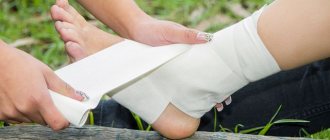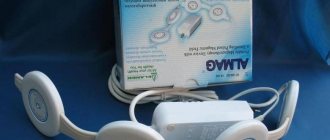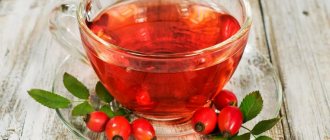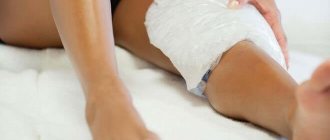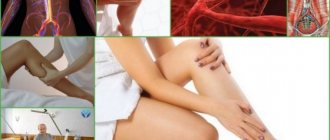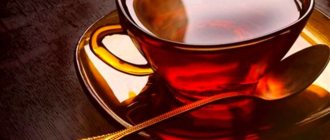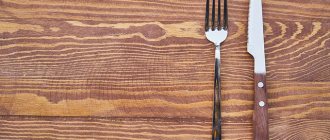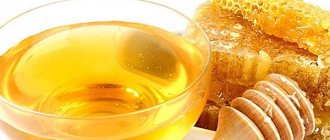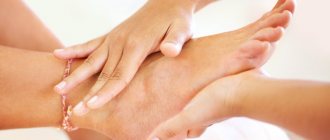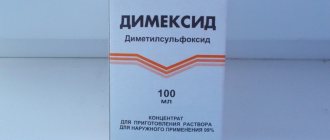Gout
Gout is a disease consisting of a disorder of uric acid metabolism. Gout is usually classified as a joint disease because excess uric acid forms salts (urates), which are deposited primarily in the joints. The first joint affected is the joint of the big toe. An inflamed bump on the thumb is a characteristic symptom of gout.
Genetically, men are more predisposed to this disease. Among the sick, almost 95% of them are. The peak incidence in men occurs at the age of 40-50 years, in women – from 60 years and older. However, gout can also affect people at a younger age.
Causes of gout
Any product of biological origin contains purines - substances that are building materials for RNA and DNA. Purine bases ingested in food are broken down, resulting in the formation of uric acid. This is a normal process. Uric acid is present in body tissues and blood plasma. The blood carries uric acid to the kidneys, where it is filtered and excreted in urine. Part of the uric acid (1/3) is excreted through the intestines. If this normal metabolism is disrupted, uric acid begins to accumulate in excess amounts.
Violations of purine metabolism can be caused by:
- genetically determined fermentopathy
. Gout develops if the production of enzymes responsible for converting purine bases into uric acid and removing the latter from the body deviates from the norm (deficiency of some enzymes is critical, hyperfunction of others). This disorder is largely due to DNA damage. The site responsible for these enzymes is located on the X chromosome. Men have one X chromosome, and women have two. This is why men are more likely to suffer from gout (women have, so to speak, a “backup copy” of the necessary genes);
- increased consumption of purine bases
. In ancient times, gout was called the “disease of kings.” The kings ate the best food, and could eat the meat of young animals, deli meats and cream pies unlimitedly (and these products are leaders in purine content. There are also a lot of purines in fatty fish, meat and fish broths, and legumes). In itself, an excess of purines in food is not dangerous, since normally the kidneys cope with the entire volume of uric acid produced. However, if there is a genetic pathology or kidney problems, gout becomes very likely;
- violation of the excretion of uric acid from the body
. If you have kidney disease, uric acid filtration may decrease. Less of it will be excreted, and its concentration in the blood will increase;
- increased catabolism of the body's own purine compounds
. Man is part of the biological world, and our body is built according to general laws. RNA and DNA are present in our body - in every cell, which means they have their own purine bases. Increased cell destruction (or otherwise catabolism - the breakdown of complex compounds into simpler ones) leads to the same increase in uric acid in the blood as if we began to receive an excess amount of purines from the outside. The reasons for the increased catabolism of purine compounds in one's own body may be radiotherapy or chemotherapy, taking certain medications, hemolysis (decomposition of red blood cells, which is caused by severe infectious diseases or diseases of the hematopoietic system).
Salt treatment methods
There are several options for using the main component on the human body. There are mentions of them in ancient books, since our ancestors knew about it. You can consult your doctor about which option to choose. He will take into account all the features and make the right choice. Sometimes, in order to achieve maximum results, it may be necessary to use several methods of influence at once.
Bandages
The most common are salt dressings for gout. It's not that difficult to prepare them. It is very effective when it is necessary not only to relieve pain, but also to relieve swelling. For it, make a small bag of natural fabric and pour a little sea salt into it. Hold it over the steam and then apply it to the sore joint. As it cools down, it will eliminate all unpleasant symptoms. You can repeat as needed.
Baths
Another option is salt baths for gout. To prepare them, dissolve 1 tablespoon of the main component for each liter of water. It needs to be left for half an hour. The water should be warm and the duration of the procedure should not be more than 20 minutes.
Compress with mustard and turpentine
There are also a large number of varieties of compresses. The most effective is considered to be a combination of salt, mustard, and turpentine for gout. Take all the ingredients one teaspoon at a time. Mix everything until smooth and mushy. Steam the limbs in water and apply the mixture. Wrap everything in cellophane and bandage it. Leave everything overnight. The procedure should be repeated daily for 10-12 days. If necessary, after a certain interval you can repeat everything.
Compress with honey
An option could be a compress for gout with honey and salt. To prepare it, you need to take 10 g of salt, 50 g each of vinegar and bee product, 100 g of quinoa. Wash the plant well and cut into small pieces. Combine with acid. Next, add all remaining ingredients. Take a clean cloth and wet it. Apply to the sore spot and hold for several hours. Then remove it. You can repeat it twice a day. The course lasts a week.
Remember that self-treatment can negatively affect your health.
Gout symptoms
An attack of gout is manifested by acute pain in the affected joint
The first stage of gout is described as hyperuricemia (increased uric acid in the blood). Hyperuricemia is detected using a biochemical blood test. In most cases, no other symptoms of the disease are detected. Sometimes general weakness, sweating, itchy skin, and constipation may occur.
Actually, it is worth talking about gout from the moment of the onset of acute gout attacks. An attack of gouty arthritis can be triggered by:
- drinking alcohol (single consumption of a significant dose);
- hypothermia;
- joint injury;
- common acute respiratory infections.
First of all, as a rule, the joint of the big toe (first metatarsophalangeal joint) is affected. Typically the joint is affected in only one leg. Quite often other small joints are affected - the wrist or phalanges of the fingers. In the future, other joints may suffer from gout attacks. In women, the disease can affect several joints at once at the very beginning.
Typically, an attack of gouty arthritis lasts no more than 5-7 days, after which complete remission occurs (all symptoms disappear) - until the next attack. This course of gout is called the intermittent (“interval”) stage. Then the disease can progress to the chronic stage.
Attack of gouty arthritis
An attack of gouty arthritis is manifested by acute pain in the joint. Quite quickly, the area of the affected joint swells and turns red. The color of the skin over the joint may take on a bluish tint. The patient feels chills and the temperature rises, possibly up to 38 °C or higher. Any touch to the joint increases the pain, the joint completely loses mobility. The pain can be very intense and cannot be relieved by analgesics.
In most cases, the attack occurs at night; by morning the pain usually subsides. However, in severe cases, severe pain can last up to 3 days, then its intensity slowly decreases.
Chronic gout
If attacks of gouty arthritis become frequent and are quite severe (periods of pain prevail over periods of remission), chronic gout is diagnosed. The chronic form of the disease is characterized by increased dysfunction of the affected joints, and as the patient stops using them, atrophy of the articular muscles develops.
A specific symptom of gout is the formation of tophi. Tophus is a subcutaneous or intradermal accumulation of urates (uric acid salts). Tophi look like nodules - dense, rounded formations. Their diameter can vary from 2 mm to 5 cm or more. Tophi usually appear approximately 5 years after the first attack of gout, slowly increasing in size. However, with an unfavorable course, their formation can occur more quickly. Typical places where they occur are fingers and toes, ears, knee and elbow joints, feet, and brow ridges. It doesn't hurt to touch these formations. The skin over tophi is usually dry and rough because its blood supply is impaired. Over time, a fistula may form in this place, through which a white pasty mass (urate itself) is released.
Tophi are not always formed (only in 50-60% of patients).
Chronic gout also often causes urolithiasis. Urates can form kidney stones, which can cause renal colic, block the outflow of urine, and contribute to the development of pyelonephritis.
Methods for diagnosing gout
Diagnosis of gout includes physical, laboratory and instrumental research methods. The diagnosis of gout is made when several signs characteristic of this disease coincide
Physical diagnosis
Physical diagnosis involves visual examination of the patient and palpation. The examination results are compared with the patient’s complaints and medical history.
Laboratory diagnostics
Laboratory diagnostics make it possible to establish that the cause of pathological changes in the joint is a violation of uric acid metabolism. The following analyzes play a decisive role in this:
- biochemical blood test (the level of uric acid in the blood plasma is important);
- analysis of synovial (intraarticular) fluid for the presence of urates in it. To do this, a puncture of the joint is done.
- 24-hour urine collection can be performed to assess glomerular filtration rate.
If there is a need to confirm that the detected tumors in the joint are tophi, a biopsy is performed with further examination of their contents.
Instrumental diagnostics
X-rays can reveal pathological changes in the joints. They occur in late stages, so the onset of the disease cannot be determined using x-ray methods. To identify tophi (they do not always protrude above the surface of the skin), computed tomography or MRI are used.
In the early stages, ultrasound can be used. Using ultrasound, fairly small deposits of salts are detected, so tophi are visible on ultrasound even at the stage of their formation. Also a characteristic sign of gout is a “double contour” - the appearance of an echogenic strip running parallel to the line of the articular cartilage. It occurs because salt crystals do not penetrate the structure of the cartilage, but simply cover it on top, creating a duplicate contour that is clearly visible during examination.
Sign up for diagnostics To accurately diagnose the disease, make an appointment with specialists from the Family Doctor network.
Treatment methods for gout
Treatment for gout is aimed at:
- in case of an acute attack - to relieve it;
- in the remission stage - to normalize uric acid metabolism. Of course, one should strive to eliminate the cause of the disease. However, if the cause of gout is fermentopathy, this is impossible. In this case, treatment will be symptomatic.
- for the treatment of concomitant diseases.
A complete cure for gout is impossible. However, with medical help, it is possible to reduce the frequency of attacks and achieve a significant increase in periods of remission.
Benefits of the substance
You can often hear it called the white death. But this is only true if it is used uncontrollably. An excess in a person’s diet can lead to the development of all kinds of diseases. But if its daily dose does not exceed 1 tsp, then it can bring a lot of benefits. You can often find sea salt in recipes to treat gout. This is due to its effect on the body. The most useful manifestations are:
- formation of hydrochloric acid;
- provides muscle movement;
- maintains water and electrolyte balance;
- transmits nerve impulses;
- tones the body;
- transports oxygen;
- destroys microbes.
Which doctor treats gout?
For treatment of gout, you should consult a rheumatologist. The help of an orthopedic doctor may be required (for example, if surgery is necessary).
Treatment of an acute attack
First of all, the patient needs rest. The inflamed joint should be immobilized. It is recommended to apply cold. You need to drink plenty of alkaline fluids - up to 3 liters per day. It is important to follow a diet: foods high in purine bases should be excluded. Painkillers (NSAIDs) and glucocorticoids are used as prescribed by a doctor. Local treatment is carried out using ointments and gels that have anti-inflammatory and analgesic effects.
When the patient feels better, physical therapy is included in the treatment. Electrophoresis, UV irradiation, and UHF are used.
Treatment of gout in remission
Treatment in remission includes:
- lifestyle changes (primarily giving up alcohol);
- diet (exclude foods that contain a lot of purines - fish, mushrooms, legumes). The diet must be prescribed by a doctor;
- drug therapy (anti-gout drugs);
- local treatment - applications of medications, physiotherapy, massage, medicinal baths (in sanatoriums);
- surgical treatment: removal of tophi that are not amenable to conservative treatment, surgical restoration of affected joints.
Make an appointment Do not self-medicate. Contact our specialists who will correctly diagnose and prescribe treatment.
Rate how useful the material was
thank you for rating
Effective compresses for gout
It is advisable to use compresses in the early stages of the disease, this will achieve a lasting effect and avoid the occurrence of acute attacks of gout.
There are many compresses for the treatment of gout. The advantage of this method is that inexpensive components are used for treatment, which are available to every patient. This method allows you to treat gout yourself at home.
Alcoholic
An alcohol compress for gout should be applied for at least 6 hours. This procedure relieves pain, helps reduce the size of the tumor and prevent further development of the pathological process.
To prepare such a compress you will need regular alcohol or vodka. If alcohol is used, then it is mixed with water in a ratio of 1:3; if vodka is used, then the components must be mixed in a 1:1 ratio.
It is necessary to take a piece of gauze, folded several times, or cotton fabric, moisten it in the resulting solution and apply it to the affected area. It is recommended to cover the top with plastic wrap, then put a warm cloth for better warming. At moderately high temperatures, all processes are accelerated. It is prohibited to go outside after a vodka compress. After removing the alcohol compress, rinse the skin thoroughly and wrap the sore spot with a warm cloth.
With Dimexide
Dimexide is widely used in the treatment of gout and other joint diseases. Compresses can be made either on the basis of Dimexide alone or by mixing it with other components, for example, novocaine.
The drug must not be used in its pure form.
Dimexide must be diluted with water in a 1:1 ratio. The resulting solution is applied to a medical bandage or gauze bandage. The lotion is attached to the affected area using plastic film. It is necessary to insulate the compress on top using fabric (preferably made from natural material).
This compress can be applied for no more than 40 minutes. The recommended holding time is 20-30 minutes. The duration of therapy should be at least 10 days. The compress is done daily. In severe cases, treatment time can reach 3 months. The duration of therapy depends on the stage of the pathological process and the general condition of the patient.
Dimexide can cause allergic reactions, so it is recommended to start treatment gradually. If redness, itching, or rash appears on the skin, you must stop treatment.
Dimexide with Novocaine
Compresses based on Novocaine and Dimexide have proven themselves to be excellent; they are used for severe pain syndrome and during an acute attack.
Adding Novocaine to a compress for gout helps relieve pain, the analgesic effect becomes much more pronounced.
Compresses with Novocaine are made in the following proportion: 3 parts of Dimexide diluted with water - 5 parts of 2% Novocaine solution (for example, 15 ml of Dimexide, 15 ml of water and 50 ml of 2% Novocaine). The resulting solution should be soaked into gauze or a medical bandage and secured to the affected area, following the rules for applying a compress. The resulting application must be insulated. The holding time is 40-60 minutes. As a rule, the pain syndrome is relieved quite quickly.
Salt compress
An effective way to treat joint diseases are salt compresses. The effect of their use becomes noticeable already on the 4th day. Local body temperature decreases, redness and swelling disappear. The saline solution is distinguished by its ability to absorb fluid from the tissue, which makes this method so common in the treatment of gout. Toxic substances also come out with water.
To prepare the compress, you will need sea salt and clean water in the proportion of 3 tablespoons of salt per 1 liter of water. After mixing the components, you need to fold a medical bandage or gauze into 8-10 layers, then soak in the resulting solution. The bandage is attached to the affected area using a bandage or adhesive tape. It is recommended to leave the salt compress overnight.
Cabbage compress
Cabbage leaf is widely used in the treatment of various pathologies. The effect of this method is weak. But, since this technique is absolutely safe and has no contraindications, it is very often used in the treatment of gout and other joint diseases.
The compress recipe is very simple. It is necessary to secure a leaf of white cabbage to the sore joint using a bandage or plaster. It is recommended to leave the compress overnight. This method only slightly facilitates the course of the pathological process.
Honey
Before applying the beekeeping product, it is necessary to thoroughly warm up the sore spot using a warm bottle or steaming in hot water.
Lotions with honey help normalize metabolism, speed up metabolism in cells, and also remove toxic substances. Honey is a strong allergen, so its use in the treatment of gout is prohibited for people prone to allergic reactions.
To prepare a honey compress, only natural honey is used. It is applied to the affected joint, after which a medical bandage or gauze bandage is attached to it. The top of the compress must be insulated with any fabric. The holding time is 40-60 minutes. If desired, the honey compress can be left overnight.
It is not recommended to go outside immediately after removing the compress, and also to wash it off with cold water. To remove honey from the skin, it is advisable to use warm water.
It is recommended to use honey lotions daily; the results from their use become noticeable after an average of 7-10 days.
Vinegar compress
Apple cider vinegar is widely used in the treatment of joint pathologies. It is allowed to be used as a prophylactic agent when gout has gone into remission. Vinegar compresses are also used for acute gouty inflammation of the joint. Their action is aimed at quickly relieving pain, as well as relieving the inflammatory process.
Apple cider vinegar is used in a concentration of 6%. A medical bandage or gauze bandage is thoroughly soaked in vinegar. The bandage is applied to the affected area using plastic film, after which it must be insulated.
It is recommended to leave the apple cider vinegar compress overnight. This manipulation is carried out at intervals of 1-2 days, since abuse of apple cider vinegar can cause complications. Vinegar helps draw out toxic substances and uric acid, which improves the patient’s well-being.
Apple cider vinegar is safe when used correctly, but in some cases it may cause an allergic reaction. If itching, redness, or swelling occurs, you should stop using the vinegar lotion.
